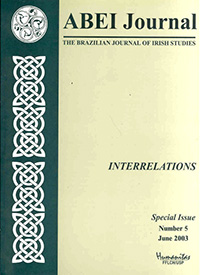Stayley’s The Rival Theatres and Metatheatre
DOI:
https://doi.org/10.37389/abei.v5i1.182531Abstract
Theatre rivalry in Ireland in the 1700s has been described by stage historians such as William Clark, La Tourette Stockwell and, more recently, John Greene and Gladys Clark. A famous case involves the Smock Alley and Aungier Street companies, which ultimately were united in the 1743-44 season. Little is known, however, about the metatheatrical content of playtexts regarding rivalry in Dublin and London, such as The Rival Theatres (1759), by George Stayley, an actor and playwright who has been ignored by scholarship. This paper is about him, his context of production and his pretexts, which can only be studied in rare books and have been the subject of a postdoctoral project I developed as a Fellow at the Folger Shakespeare Library (Washington D.C./ 2001-02). Aspects that I have stressed include the role of audience preferences and of business constraints in the shaping of content and form, provided the tensions between high culture (notably Shakespearean) and the popular genres (the farce in particular) that gained space and visibility in the 1700s.
Downloads
Published
Issue
Section
License
Copyright (c) 2003 Margarida Gandara Rauen

This work is licensed under a Creative Commons Attribution-NonCommercial 4.0 International License.


